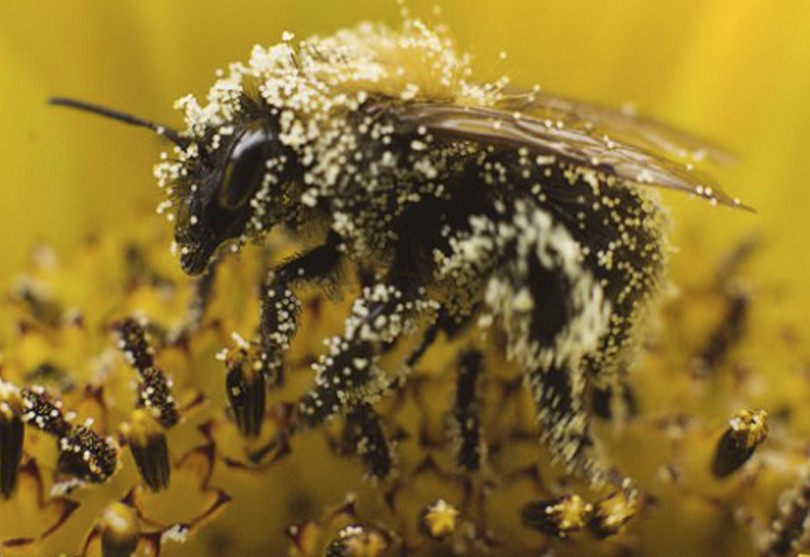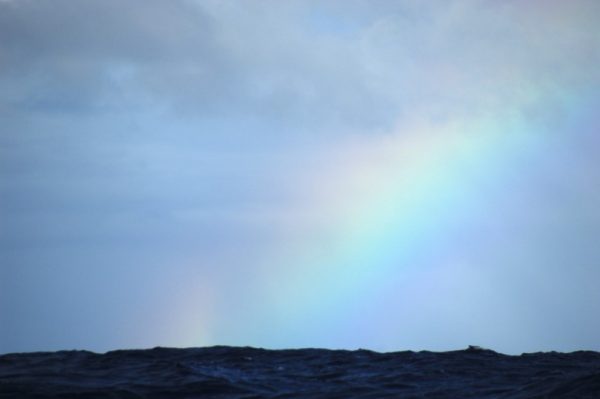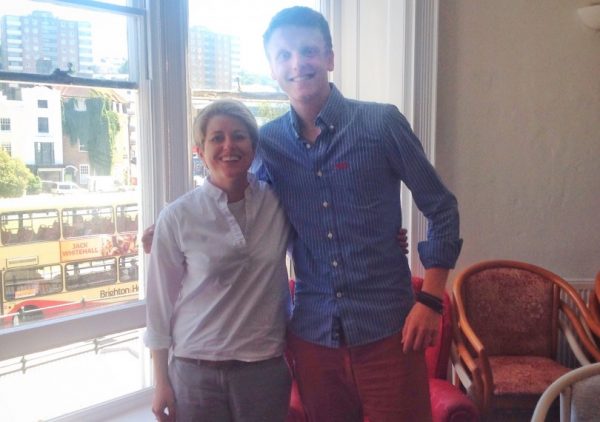When Jane King from Pale Blue Dot first contacted me to ask if I’d like to be involved in the Lost & Found exhibition at ONCA I jumped at the chance. A big motivation for me in conducting research is the impact I hope the results will have on real-world problems, such as the conflict between sustainable, affordable food production and the conservation of biodiversity. Communicating my research to the public is something I feel very passionate about. After all, much of the research conducted at universities is funded via government grants, so it is imperative that people are able to access the results of the studies their taxes support.
The mock lab, at the back of ONCA gallery, is a very accurate reconstruction of my daily working environment – it was very funny for me to visit ONCA last week and see some of my equipment and data sheets in place as part of an art exhibition! There really is a lot of beauty in the scientific study of the natural world, from the vivid fuchsia pink dye we use to stain the pollen samples we collect from bees’ nests, to the complex and intricate surface structures of the pollen grains themselves. Although it is easy to lose sight of this beauty when staring down the microscope for several hours, trying to identify minute differences in these structures to determine which plant species bees have been visiting!
I hope that the mock lab, and the installation as a whole, will help visitors to understand what it’s like to conduct scientific research, and go some way to help remove the barriers of communication between ‘the scientists’ and ‘the public’. This is also one of the aims of a new initiative, The Buzz Club, set up by members of the Goulson group at Sussex University. The Buzz Club is a unique way of helping people of all ages learn more about pollinators and their local environment, by enabling them to become the scientist. The Buzz Club’s overall goal is to ensure that we conserve the UK’s wild bees and other insects, giving them a future. However we can only do this if we understand more about them; Why are some disappearing? How fast are they declining? How many are left?
To answer these questions we involve the public in fun nationwide surveys and experiments they can conduct in their gardens, community spaces or school yards. The data is then collated and analysed by us, with the aim of building an evidence-base to provide informed advice to our volunteers and those responsible for managing community spaces as to how they can help – for example which flowers should they grow and how can they best provide nesting sites and suitable places to breed for the different types of insect.
Dr. Beth Nicholls works in the Goulson Lab at the University of Sussex studying the impacts neonicotinoids have on solitary bees and bumble bees.
Lost & Found is a collaborative project between Pale Blue Dot and ONCA.
Exhibition runs until 23rd September.
Opening times: Weds – Fri 12 noon – 7pm, Sun & Sat 11am – 6pm.





